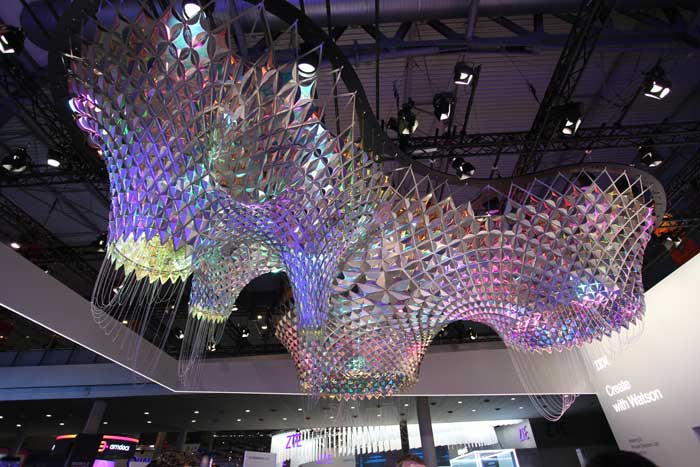 Last year IBM spend a staggering $3.56 billion to acquire two medical companies Merge Healthcare and Truven Health Analytics. The reason for these purchases was to train Watson, IBM’s AI based super computer.
Last year IBM spend a staggering $3.56 billion to acquire two medical companies Merge Healthcare and Truven Health Analytics. The reason for these purchases was to train Watson, IBM’s AI based super computer.
Watson who..?
Watson burst onto the scene back in 2011 when it participated in trivia -based game show ‘Jeopardy’ and won the show beating even two former champions. Since then IBM has been testing Watson in a number of areas. ‘Watson is working with businesses, scientists, researchers, and governments to outthink our biggest challenges’ says IBM’s official website. The core strength of Watson, named after IBM’s founder Thomas J Watson, is that it can read huge chunks of complex data including unstructured data to identify patterns, similarities or reason. The brain of Watson is powered by 90 servers with a combined data storage of 200 million pages. This information is processed against six million logic rules. Some of the Watson’s spec is pretty overwhelming for a normal person, for example, Watson is powered by 2880 cores and a 15 terabyte RAM. The entire device including data storage occupies a space of about 10 refrigerator size.
Watson the Doctor
IBM’s program to involve Watson in Oncology began in 2012 when IBM announced partnership a partnership with Memorial Sloan-Kettering Cancer Center doctors to tap their knowledge and catalog their specific expertise in rare forms of cancer. Those early experiments produced impressive results. From their IBM started a full-on approach to revolutionize the healthcare industry. In a press release back in 2015 IBM said Watson ‘will soon transform’ the decision making in the healthcare industry
Those above-mentioned acquisitions play a key role in the development of Watson. Merge health care has around 30 billion x-ray images and Truven Health Analytics has aggregated and analyzed data from more than 8,500 hospitals, insurers, and government agencies. These data along with data from companies such as Explorys and Phytel (both are data analytics start-ups in the healthcare industry which IBM acquired earlier) will play a key role in training Watson to find abnormalities in X-rays, Medical report, Patient history etc. But those huge ‘medical education’ bill is starting to pay off. Doctors at University of North Carolina School of Medicine provided Watson with 1000 patient reports and Watson was able to suggest treatment which corresponded with the actual recommendation by the oncologists in 99% of cases. Additionally, Watson was even able to give second options in 30% of the cases which were missed by human counterparts. Beyond just clinical experiments Watson is slowly starting to establish its presence in real world treatment for cancer. Many top hospitals in countries like USA, India, and Germany are getting treatments suggestion from Watson although they don’t bypass a human doctor, at least for now! Earlier this month Kunyang University Hospital, Korea has also announced its launch of IBM Watson for Oncology.
Beyond oncology, Watson is also moving to other areas of healthcare. For its latest venture, Watson is trying to improve the life of people with autism and other cognitive diseases. The new Watson application called Content Clarifier will simplify complex data to a personalized content for individuals improving overall comprehension.
A quick overview of the application can be found here.
Watson the Artist
Because of Watson ability to learn complex information beyond data Watson can replicate humans even in an abstract field such as art where there is no real set of rules or logics to follow. This year for the Mobile World Congress in Barcelona IBM tasked Watson to understanding Antoni Gaudí’s greatest works such as La Pedrera and la Sagrada Família to help create a unique sculpture for the annual trade show.

With the help of its visual recognition technology, Watson reviewed hundreds of images of Gaudí’s building and other local building structure to understand the basis of inspiration for the artist. Then Watson read thousands of articles, song lyrics about Gaudi’s works using its Alchemy Language software
“What we were really trying to do at the essence was figure out if we can programmatically start to understand what the features of a particular style or architect are,” said Jeff Arn, a Watson manager at IBM
Watson was able to identify key elements of Gaudi’s Modernist Catalan style- such as dream-like colours, repeated patterns such as shells or beehives like structures, use of materials like wrought iron etc. After Watson’s analysis was complete IBM gave the findings to Softlab which converted it into actual installation, a dream like rainbow coloured work of art which hung above IBM’s booth at the congress.
But the genius of Watson doesn’t stop there. The interactive installation was able to react in real time in the event using Watson’s Tone Analyzer, the installation moved in three level of height depending up comments and general buzz it received in social media and in the event.
Final thoughts
With most of IBM’s traditional businesses shrinking Watson may be the company’s best bet to save itself and make the company relevant again in the modern business world. There are many other areas where Watson-powered applications are helping businesses today. Performance Bicycle is using Watson-powered customer engagement system to bridge the gap between companies online and in-store customers and many banks are using Watson for better customer engagement. But in all those application Watson can’t replace humans completely, not anywhere in the near future. Also, abilities of Watson may be overestimated by the company. But Watson is a step in the right direction in making computers understand the complex human language, the core challenge in developing true AI machines, although the journey may be very very long.












